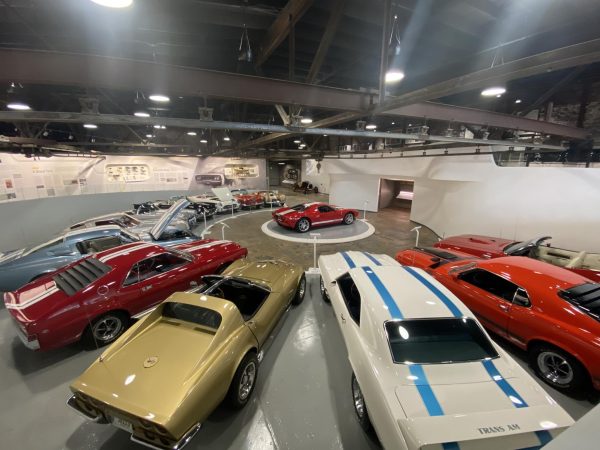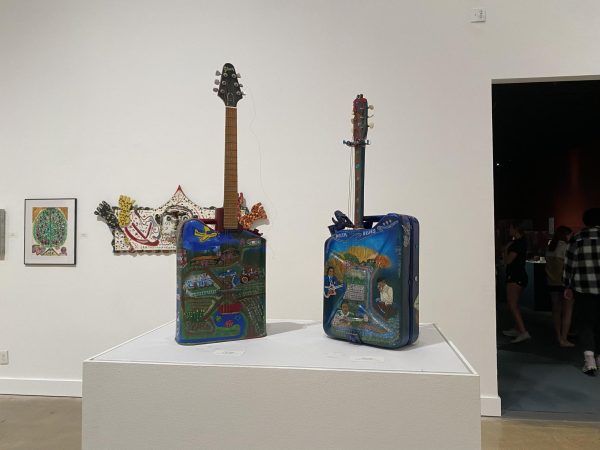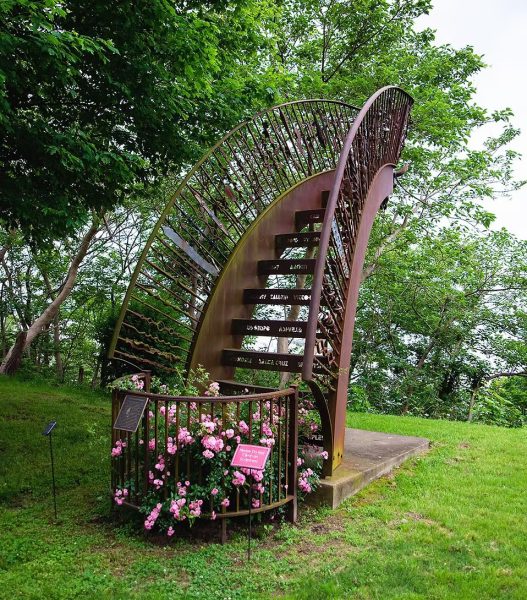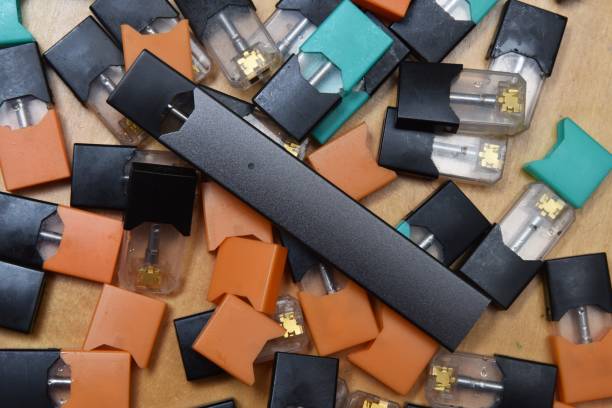Edge Motor Museum

On the edge of downtown Memphis, you can find a museum that journeys through the history of the American sports car. For the car fanatics and car-wary alike, almost anyone can truly appreciate the beauty of these cars.
Before you go, a word of warning — the “free entry on Saturdays” message found online translates to $10. While my goal was to find some of the more “rare” and free museums around Memphis, I ultimately decided to go ahead and pay. Let’s just say my decision was not influenced by my embarrassment to admit I wasn’t expecting an entry fee. Though looking back, I’d say the experience was well worth the price.
The visit starts with a brief introduction by a museum guide who explains the significance of the three cars on display at the entrance. Once the introduction is over, you’re free to explore at your own pace, following a carefully curated path that tells the tale of the rise, plateau and fall of the American sports car. One of the museum’s highlights is a rotating panel featuring the iconic car from “James Bond” — a 2005 Ford GT. You’ll also get to see the first-ever speed gun, an unfortunate invention for those who like to speed. Of course, the cars themselves are the true stars of the show. Thirteen cars outline the main platform of the museum, but if vintage cars are more your style, there are six cars on display made in the early 1900s.
Overall, I believe this museum is a great sentiment to American history. The museum’s goal, after all, is to preserve the history of these cars in order to tell a story about cars, speech, economy and eventually ourselves. A story that you can learn for $10.
Art Museum of the University of Memphis (AMUM)

There are multiple entrances to the AMUM, but my personal favorite is the one where you are immediately greeted by the 25-foot statue of Ramesses the II. This statue is a reference to our city’s namesake, Memphis, Egypt, and acts to mirror the hopes of our city’s founders to be a hub for culture and trade.
The museum itself was originally created as a resource for college students studying art and history, but thankfully, it is now free to the public. AMUM’s collections contain over 3,000 works of art that span more than 2,000 years of human history and represent cultures from the Americas, Asia, Europe, Africa and Oceania. Some of the most popular and largest exhibits include their African, Egyptian and Mid-South art collections.
The African collection, consisting of more than 300 traditional works — including masks, wood carvings, metalwork and textiles — is a very unique way to experience art you may have never seen or heard of. Over 170 of these pieces were donated by Martha and Robert Fogelman, emphasizing the museum’s commitment to showcasing the diverse cultures of Sub-Saharan Africa.
The museum maintains a close partnership with The Institute of Egyptian Art and Archaeology to further connect to Memphis, Egypt, which helps maintain and exhibit the museum’s collection of over 1,000 ancient Egyptian artifacts. These antiquities, ranging in date from 3800 B.C.E. to 700 C.E., provide visitors with a fascinating glimpse into ancient Egyptian history and culture. The highlights include mummies and hieroglyphic inscriptions on stone.
While some of my friends found the museum a bit underwhelming compared to Edge Motor, AMUM offers a more traditional museum experience. If you are a fan of museums in general, this could be a nice way to spend an afternoon exploring history, culture and art in a quiet and unpopulated setting.
Metal Museum

As the only institution of its kind in North America, and one of the few worldwide dedicated exclusively to metalwork, the Metal Museum works to celebrate, recognize and promote metal craftsmanship. The Metal Museum carries out its mission through four key programming areas: rotating exhibitions featuring both historic and contemporary metalwork, a Permanent Collection that includes objects, books, folios and archives, a fully equipped Metals Studio with a Blacksmith Shop, Foundry, a small metals lab, and design lab that provide hands-on learning opportunities and community engagement programs designed to educate visitors of all ages.
I will split my visit into three parts: the museum itself, the gardens and the metalworking demonstrations.
Inside, you’ll find hundreds of pieces of work, both large and small, from ancient works to modern pieces. The rotating exhibitions mean that every visit brings something new, showcasing different aspects of metal artistry from various periods and styles. Many pieces are on loan or have been given as gifts from metalworkers who support the Metal Museum’s ideals and efforts to create a space for the art of metalwork.
Although the inside museum was wonderful, my favorite part was the sculpture garden outside of the museum. Freed from the constraints of an indoor gallery, these pieces are free to span over 15 feet tall and sometimes equally as wide. Each piece is described with a plaque at the base of the work, which details the artist, date of creation and whether or not the piece is on loan to the museum. One of the highlights of visiting the Metal Museum is the live metalworking demonstrations, which take place every Saturday and Sunday at 1:30 p.m. Keep in mind that this requires paid entry, with prices varying based on age and membership status. However, Tennessee residents can enjoy free admission on Thursdays.
Overall, the Metal Museum was a great place where I learned a subject I previously knew little about. The craftsmanship on display was beautiful, and whether you’re watching live demonstrations, exploring the exhibits or admiring the outdoor sculptures, I think it would be hard to walk out without a deeper appreciation for metalworking.



































